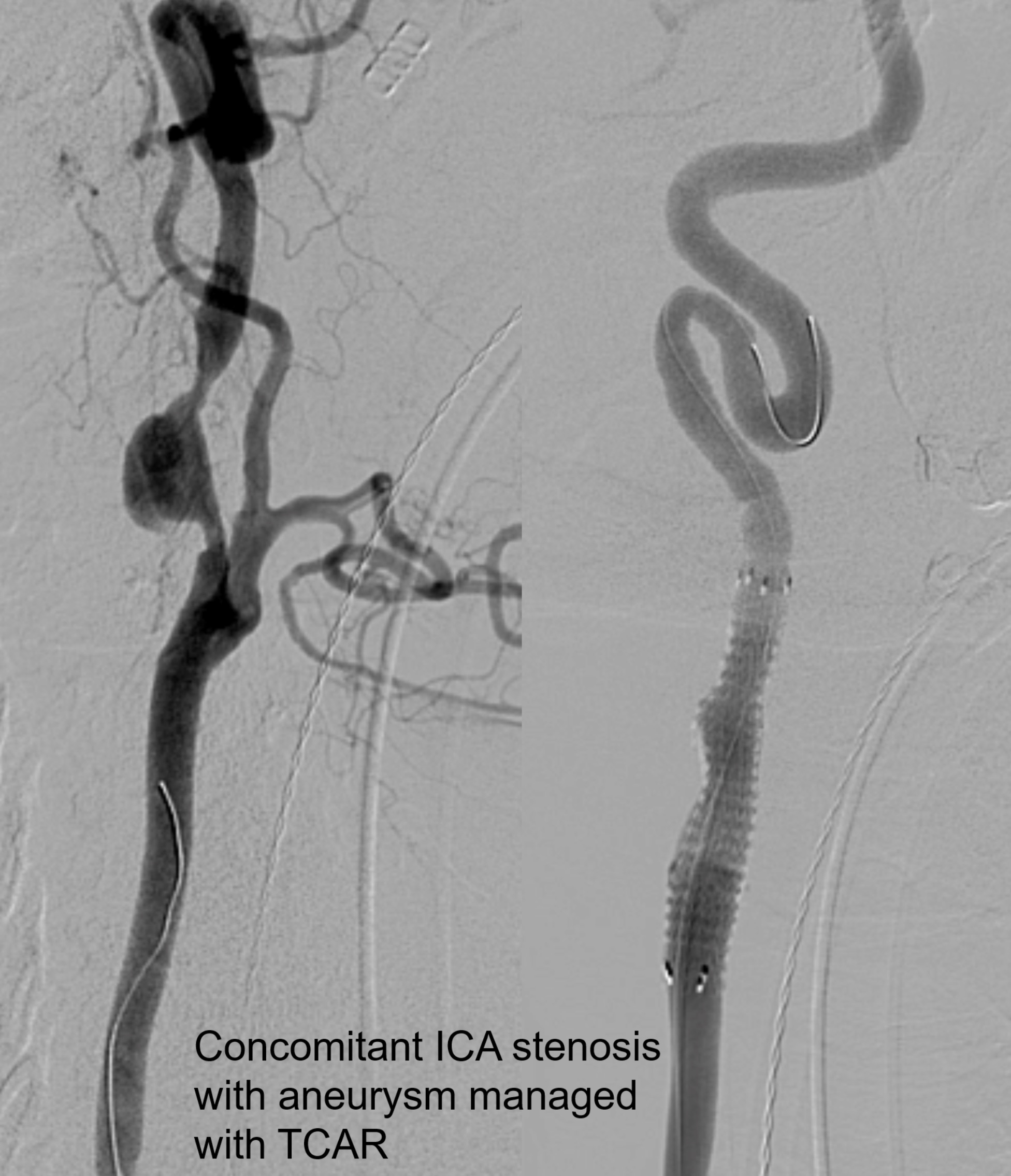Extracranial Carotid Artery Aneurysm with Concomitant Stenosis: A Novel Hybrid Approach with Trans-Carotid Artery Revascularization
Limael E. Rodriguez, MD, Michael A. Corbin, II, BS, David J. Dexter, MD, Animesh Rathore, MD, Rasesh M. Shah, MD, Salini Hota, MD, Jurabek Babadjanov, MD.
Eastern Virginia Medical School, Norfolk, VA
DEMOGRAPHICS
Extracranial carotid artery aneurysms (ECAA) are present in 0.2% to 5% of all carotid procedures posing a surgical treatment challenge. Both open reconstruction and endovascular repair (i.e. coiling vs stenting) have been described. Transcarotid artery revascularization (TCAR) is a novel hybrid alternative in high risk patients, involving direct common carotid artery (CCA) access combined with flow reversal as cerebral protection while stenting. We present a novel application of TCAR in two high risk patients with high grade internal carotid artery (ICA) stenosis with concomitant ECAA.
HISTORY
1. A 64 year old man presented with high grade (80-99%) asymptomatic right internal carotid artery (ICA) stenosis with two saccular ECAAs just above the C2 level. Past medical history included hyperlipidemia, and chronic atrial fibrillation managed with cardiac pacemaker.
2. A 78 year old man presented with symptomatic high grade (80-99%) ICA stenosis with right eye vision loss. Past medical history included COPD, CHF, CAD with recent MI and DES stent placement.
PLAN
1. Open surgical repair was high risk given high lesion. TCAR was used to treat the ICA stenosis with concomitant ECAA using a covered stent (FIGURE). The patient was discharged post op day 1 and is doing well at 8 months.
2. Medical comorbidities and high lesion deemed him high risk for open surgery. During TCAR, a large pseudoaneurysm (due to plaque rupture) was noted concomitant with ICA stenosis. It was similarly treated with a covered stent. The patient was discharged post op day 1 and is doing well at 20 months.
DISCUSSION
To our knowledge, the use of TCAR in high grade stenosis with concomitant ECAA has not been previously described. TCAR provides easier access to the anatomically inaccessible high lesions for endovascular treatment under cerebral protection with flow reversal. Covered stent addresses the high embolic potential of the ECAA. TCAR thus, provides a safe alternative to the previously described open surgical and transfemoral endovascular approaches in patients with concomitant stenosis and ECAA.

Back to 2019 ePosters
